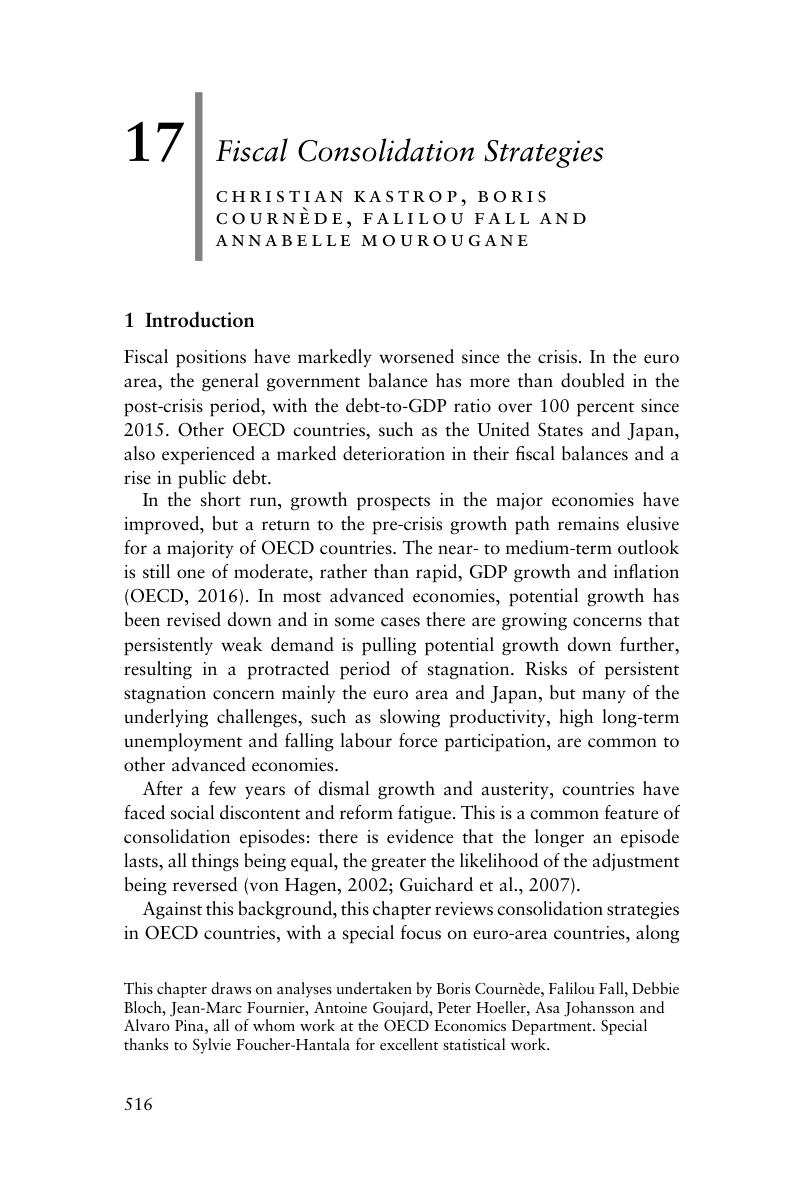Book contents
- Rethinking Fiscal Policy after the Crisis
- Rethinking Fiscal Policy after the Crisis
- Copyright page
- Contents
- Figures
- Tables
- Boxes
- Contributors
- Acknowledgements
- 1 Introduction and Overview
- Part I Frontiers of Fiscal Policy
- Part II Better Institutions for Better Fiscal Policy
- Part III New Analytical Perspectives
- Part IV The Comeback of Discretionary Fiscal Policy
- 15 What Do We Know about Fiscal Multipliers?
- 16 Government as Borrower and Innovator of Last Resort
- 17 Fiscal Consolidation Strategies
- 18 Discretionary Fiscal Policy and Recessions
- Book part
- Index
- References
17 - Fiscal Consolidation Strategies
from Part IV - The Comeback of Discretionary Fiscal Policy
Published online by Cambridge University Press: 19 May 2017
- Rethinking Fiscal Policy after the Crisis
- Rethinking Fiscal Policy after the Crisis
- Copyright page
- Contents
- Figures
- Tables
- Boxes
- Contributors
- Acknowledgements
- 1 Introduction and Overview
- Part I Frontiers of Fiscal Policy
- Part II Better Institutions for Better Fiscal Policy
- Part III New Analytical Perspectives
- Part IV The Comeback of Discretionary Fiscal Policy
- 15 What Do We Know about Fiscal Multipliers?
- 16 Government as Borrower and Innovator of Last Resort
- 17 Fiscal Consolidation Strategies
- 18 Discretionary Fiscal Policy and Recessions
- Book part
- Index
- References
Summary

- Type
- Chapter
- Information
- Rethinking Fiscal Policy after the Crisis , pp. 516 - 539Publisher: Cambridge University PressPrint publication year: 2017
References
- 1
- Cited by

